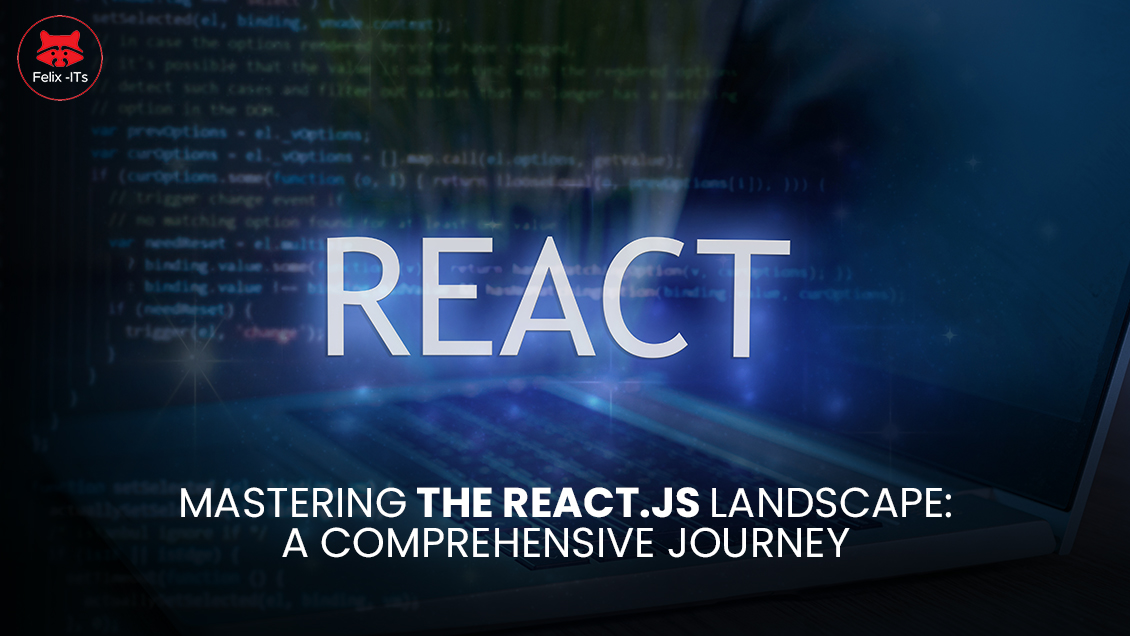The dynamic digital world keeps changing and evolving. Thousands of technologies have made it capable of doing various tasks. Out of all these web technologies, the presence of React.js is quite noticeable. It is probably the most powerful and one of the most popular libraries to build dynamic, fast, and user-friendly web applications. If you are already a developer or planning to step into the world of coding, you need to learn React.js to design modern web apps that match the expectations of users in today’s world. This blog is your comprehensive guide on how to master in React.js development. We have covered everything you need to know here.
React.js Development: What is it?
The digital world of web development has changed a lot in the recent decade. Nowadays, users expect fast, interactive, and fluid experiences online. React.js was created and maintained by Facebook to help developers build user interfaces that are quick and seamless. It lets you write complex, interactive and large web apps that can change data without a full page refresh. By enrolling in a React.js programming course in Pune, you can learn how to build complex, interactive web apps that change data without requiring a full page refresh. It is flexible and can handle high server loads and changes in the user interface.
React has a unique way through which it builds user interfaces. It is a JavaScript library which is used for building user interfaces. If you’re considering mastering React, joining a React.js course class in Pune can provide you with hands-on experience in learning its core concepts.
Here is a brief introduction to the Core Concepts of React, before we elaborate these in detail in the posts to come:
A Component-Based Architecture: What sets React apart from the others is the component-based architecture. A typical application can have hundreds or thousands of components.
An Overview of the Core Concepts
React is a simple tool, and that is why it is so popular. At its core, React is a super fast, flexible, and scalable JavaScript library that enables you to build fully featured, easy-to-use, and interactive web or mobile applications from start to finish. The next few concepts are why it is quickly becoming a widely adopted tool in the industry.
-
Component-Based Architecture
React is used to build UI components that act like building blocks. Each component has its logic and controls, and they can be combined to create complicated applications.
-
Virtual DOM
React uses what is known as the Virtual DOM, which allows for maximum flexibility everywhere you go. Often, development within the UI will require changes to the Real DOM. Unfortunately, this is often very slow. Instead, React constructs a Virtual DOM inside memory or something similar. Depending on the situation, it will only change certain sections of the Real DOM, thus improving rendering time and performance.
-
State and Props
State and Props are values that react components bring when rendering. State is data that will change over time, while props are data that are passed down from a parent component. You can inject and pass state and props from component to component, which makes creating dynamic, interactive applications in React a piece of cake.
-
JSX
The primary challenge you can face when using React is that if you work with 20 components and write them separately using only JavaScript, things will begin to look messy quickly. To solve this terrible idea, React creators realized that it would be better if we could write the HTML portion of that code right inside the JavaScript.
Bonus Read – Know the difference between Xamarian and React Native
The Benefits of Mastering React.js Development
While you have now briefly seen the core concepts of React, let us look into why it is worthwhile to master React.
-
Speed and Efficiency
React with the Virtual DOM is able to do it superbly well. It enhances the performance of your apps to be faster and responsive. This becomes an important welcome necessity while developing and building large applications where performance becomes a core aspect driving user retention.
-
Reusable Components
The component-based structure of React lets you create a component just once and be able to reuse it across different parts of your application, saving time and stability throughout the application.
-
Scalability
React can easily manage large applications. Whether you are developing two pages for a personal project or an entire set of pages for an enterprise-level system, scalability is readily available, making it easy to manage as your application grows without making the codebase overly complex. Many professionals looking to master React.js development in Pune appreciate its ability to manage growth efficiently.
-
Robust Ecosystem
One remarkable feature of React is its huge ecosystem of tools and libraries that simplify development. From state management libraries, like Redux, to testing utilities, React’s ecosystem provides everything needed to develop production-ready applications.
-
Jobs Opportunity
React is widely used throughout the industry, and therefore mastering it brings in significant job opportunities. This is one of the most sought-after skills in the web development job industry, opening avenues for lucrative career opportunities. Mastering React.js development opens the door to lucrative roles in the industry, as React continues to be one of the most in-demand skills in the job market.
A Must Read – Level Up Your Skills with These Full-Stack Development Project Ideas
How to Master React.js Web Development
React.js knowledge can take years to gather but can also be gained in time with some dedication toward learning. These are some concrete steps that may help you in the learning path:
-
Start with the Basics
Components, JSX, state, and props are terms you must understand clearly at the outset. Write small applications to get a feel for the concepts. Focus on writing clean, organized code and understand how React manages rendering components.
-
State Management
As applications become bigger, so does the complexity of state management. Go forward with more intermediate topics like Context API and External State Management Libraries like Redux. Such tools will make handling global state in larger applications all the more efficient.
-
Learn Hooks
Though functional components are the latest trend, they were initially unable to maintain states. Hooks such as useState, useEffect, and useContext permit us to do just that. Acquiring knowledge on these would be much needed if you want to write modern React code.
-
Exploring React Router
Any web application is useless if users cannot navigate to the pages they need. React Router makes user page requests smooth. It enables users to go back and forth through pages, which is not possible with the exclusive usage of react.
-
Write More Tests
Beginners generally overlook coding tests, which may result in a messy project, once it starts becoming bigger and more complex. React has many tools and libraries, with Jest and React Testing Library being the most utilized. They make testing smooth, ensuring everything runs as expected.
-
Keep Up With Updates
React is vibrant, active, and still evolving. So, keep reading the official React document, taking part in the React community, keeping a close attentive to the best practices.
Your Path Forward for React.js Course
React.js cannot simply be called a library but, rather, a fresh advance in the way of building web applications. Mastering React doesn’t merely equip you with the ability to program in a whole new way but also expands your job opportunities many fold in their web development space. By applying yourself, keeping a certain consistency in practice, and following an appropriate learning path, such as a Master React.js development course, you can take this journey and set sail ahead for the unending changes in the web development world.


